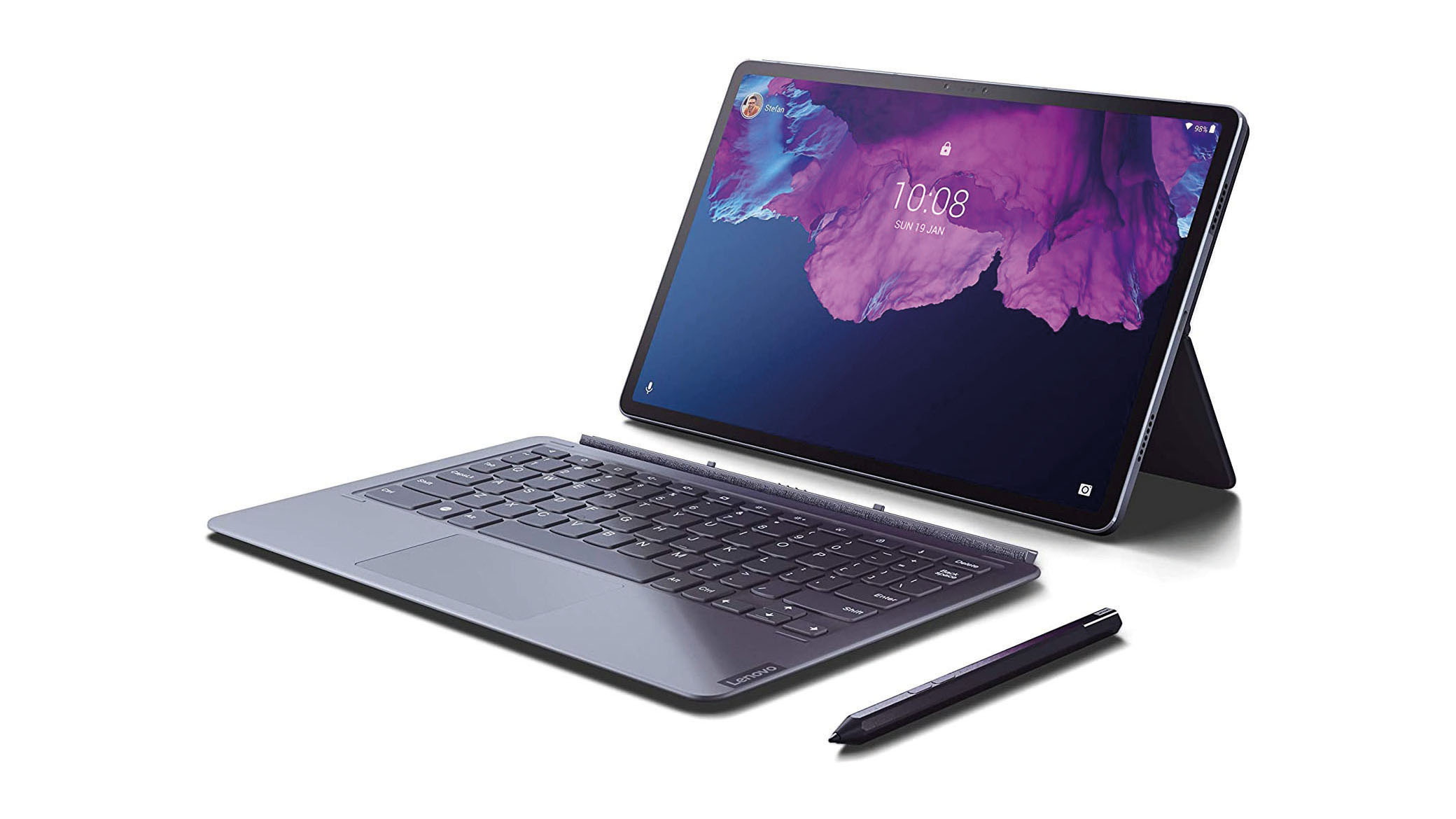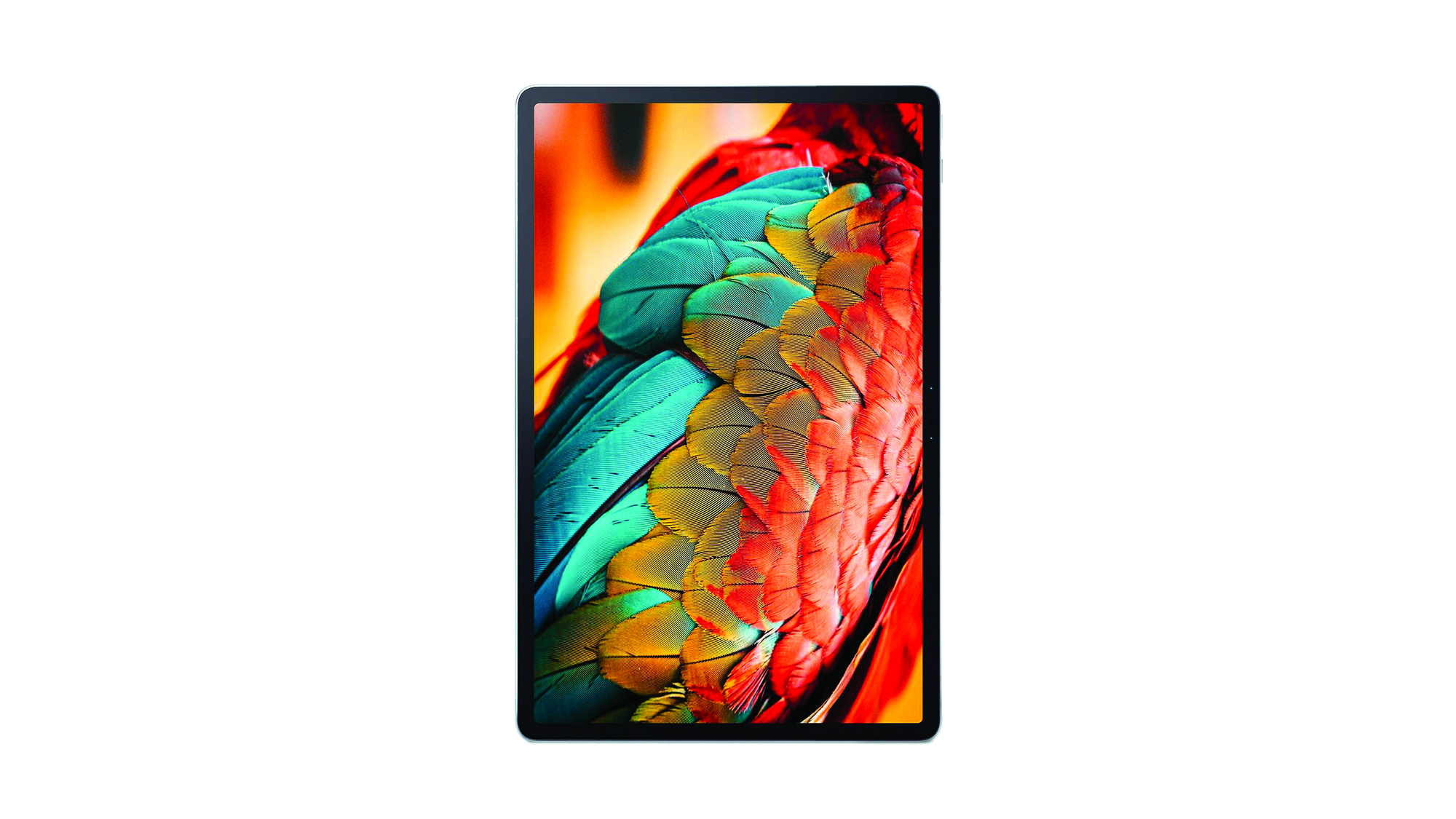Lenovo Tab P11 Pro review: A superb Android tablet with a convenient keyboard case
It might not fully replace a laptop, but the Tab P11 Pro makes a capable and versatile travelling companion


-
+
Fantastic screen
-
+
Great battery life
-
+
Super value for a tablet plus keyboard
-
-
Android OS and apps aren’t fully optimised for laptop-style use

The enduring appeal of tablets is no mystery: they’re more portable than a laptop, they offer instant-on access to apps and services and they tend to have better battery life. They’re often cheaper too, making them a tempting choice for on-the-go communications and email.
Lenovo’s Android-based Tab P11 Pro tablet aims to combine those advantages with laptop-like power and versatility. The price above gets you the tablet plus a folding keyboard case and Lenovo’s active Precision Pen 2 stylus, so you can type out full-length documents, take notes and sketch with ease.
It’s an obvious rival to Microsoft’s Surface Go, or perhaps to Apple’s iPad Pro – but the Android OS and the distinctive hardware design mean it offers an experience that isn’t quite like either.
Lenovo Tab P11 Pro review: Design
On its own the Tab P11 Pro looks pretty much like any other tablet. It measures 264 x 171 x 6mm, and if you’re using it in landscape orientation then there’s a webcam set into the upper bezel, with a USB Type-C charging port on the right-hand edge. Power and volume buttons sit around the upper left corner, with a microSD card slot at the left. Sadly there’s no 3.5mm socket for a headset.
The tablet probably won’t spend much time in its naked state, though: it’s more likely to be safely snapped into its smart grey fabric case, which attaches magnetically and folds open to reveal a full keyboard and touchpad. A flap at the rear lets you prop up the screen at whatever angle suits you; there’s no slot for the stylus, but an adhesive holder is supplied, so you can stick the Pen onto the case or just carry it around separately.
It all feels very solid and sturdy, and the case adds little to the size of the tablet, growing its width and depth to around 180mm x 14mm. It does push up the weight quite a bit, from 485g to 927g, but the whole assembly is still lighter than most laptops.
The keyboard is perfectly pleasant to use, too. The action feels a little soft, and the bed naturally lies flat on the desk rather than being propped up at an ergonomic angle, but the keys are a decent size and the touchpad is responsive. To help you make the most of it, Lenovo’s implementation of Android 11 features a “Productivity mode”, which wraps up your apps in draggable, resizeable windows, and pops up a dock along the bottom of the screen, similar to the Windows taskbar - or indeed the iPadOs dock.
While this creates a more laptop-like experience, using Android in this way still throws up some quirks. We had to learn to tap the Alt+Tab keys to switch tasks, rather than holding them down, and to double-click to select text rather than dragging with the mouse pointer. Right-clicking isn’t really a thing in Android, either – context menus are normally discovered by long-clicking instead. These aren’t huge issues though, and we mostly stopped tripping over them after the first day or two.
Lenovo Tab P11 Pro review: Display
The Tab Pro P11’s screen is actually a bit larger than the name suggests – at 11.5in across the diagonal, it’s bigger than almost any other tablet on the market, aside from specialist models like Apple’s 12.9in iPad Pro. At this scale its 16:10 shape feels a bit unwieldy when you’re holding it up in portrait orientation, but it means things don’t feel cramped in laptop mode.

It also looks fantastic. A pixel density of 262 PPI means text is impeccably clean and sharp, and this is also one of very few tablets around to use an OLED panel, which delivers exceptional warmth and solidity. We measured a maximum brightness of 361cd/m2, but in practice it looks more brilliant than IPS panels with much higher numbers. That’s helped by an unbeatable contrast ratio of infinity:1, meaning that black pixels emit no light whatsoever.
On top of that, the screen has a refresh rate of 120Hz, so scrolling and animations are gorgeously smooth, and DCI-P3 colour coverage of 99.6% means photos and movies are guaranteed to look precisely spot on. The only screen we’ve seen that can compete is the iPad Pro’s.
Lenovo Tab P11 Pro review: Specs and performance
The Tab P11 Pro packs in a capable eight-core Qualcomm Snapdragon 730G processor, and supports it with a big 6GB of RAM. This combination enabled the P11 Pro to score a creditable 533 in the Geekbench single-core test, and 1,698 for multi-core performance. For comparison, Lenovo’s regular Tab P11 scored 309 and 1,325 in the same tests, while Nokia’s value-conscious T20 tablet managed 347 and 1,165.
If you really want raw power, Samsung’s overachieving Galaxy Tab S7 is a palpably faster tablet, with scores of 952 and 3,207 respectively. And no Android tablet can approach the performance of Apple’s own-brand silicon: the regular £266 iPad achieved 1,331 and 3,381 in the same tests, and pricier models go up from there.
In practice though, it’s hard to see why you’d need a faster tablet than this. All the apps we tried were absolutely smooth and responsive, with seamless multitasking. Video calls are a breeze too – the twin cameras both capture sharp, well balanced 1080p video – and storage is ample, with 128GB of onboard capacity meaning you’ll probably never need to make use of the microSD slot.
Lenovo Tab P11 Pro review: Battery life
If you’re thinking of taking the Tab Pro P11 on your next away day, you can be confident it won’t let you down. In our battery rundown test – which involves engaging flight mode and setting the screen to a standard brightness of 170cd/m2 – it managed an excellent 17hrs 6mins of full-screen video playback, with the keyboard attached.
That’s one of the best performances we’ve seen from any tablet: the 12.9in iPad Pro only lasted around 13½ hours in the same test. Amazon’s Fire HD 8 and 10 devices get closer to 20 hours, but we wouldn’t necessarily recommend those for a business role as they use Amazon’s customised Fire OS and don’t have matching keyboard or stylus options.
Lenovo Tab P11 Pro review: Verdict
If you want a tablet that can grow into a laptop role when needed, the Tab P11 Pro is a strong contender. The hardware easily outclasses the Surface Go, which has a more ordinary screen, barely half the battery life and a less snappy overall experience. And while its performance is nowhere near a match for the iPad Pro, it does everything an SMB is likely to need for around half the price.
The only thing that really holds this tablet back is the software. The Android versions of Google Docs, Microsoft Office and so forth are clearly designed for smaller, touch-only devices, and when you open them up on an 11.5in display, with a full keyboard and touchpad, they can feel disappointingly basic. You’ll get a richer experience on any Windows device, or on an iPad that can run Apple’s tablet-focused Pages and Numbers apps, not to mention high-end creative tools such as Pixelmator, Adobe Illustrator and GarageBand.
This doesn’t mean the Tab P11 Pro is a washout, though. It just means that you should recognise it for what it is – a thoroughbred Android tablet that you can conveniently type and draw on when the need arises. If that sounds like something you can work with then the Tab P11 Pro is an excellent executive-class tablet at a very reasonable price.
Lenovo Tab Pro P11 specifications
| Processor | Qualcomm Snapdragon 730G |
| RAM | 6GB |
| Screen | 2,560 x 1,600 resolution (16:10) 11.5in OLED, 120Hz (361cd/m2 peak) |
| Front camera | 8MP (1080p video) |
| Rear camera | 13MP (1080p video) |
| Dust and water resistance | No |
| 3.5mm headphone jack | No |
| USB connection type | USB Type-C 3.2 Gen 2 |
| Storage options | 128GB |
| Memory card slot (supplied) | microSD |
| Wi-Fi | Wi-Fi 5 |
| Bluetooth | Bluetooth 5 |
| NFC | No |
| Cellular data | 4G option |
| Dimensions (WDH) | 264 x 171 x 6mm (264 x 180 x 14mm with keyboard case) |
| Weight | 465g (927g with keyboard case) |
| Operating system | Android 11 |
| Battery size | 8.6Ah |
Get the ITPro daily newsletter
Sign up today and you will receive a free copy of our Future Focus 2025 report - the leading guidance on AI, cybersecurity and other IT challenges as per 700+ senior executives
Darien began his IT career in the 1990s as a systems engineer, later becoming an IT project manager. His formative experiences included upgrading a major multinational from token-ring networking to Ethernet, and migrating a travelling sales force from Windows 3.1 to Windows 95.
He subsequently spent some years acting as a one-man IT department for a small publishing company, before moving into journalism himself. He is now a regular contributor to IT Pro, specialising in networking and security, and serves as associate editor of PC Pro magazine with particular responsibility for business reviews and features.
You can email Darien at darien@pcpro.co.uk, or follow him on Twitter at @dariengs.
-
 ‘Phishing kits are a force multiplier': Cheap cyber crime kits can be bought on the dark web for less than $25 – and experts warn it’s lowering the barrier of entry for amateur hackers
‘Phishing kits are a force multiplier': Cheap cyber crime kits can be bought on the dark web for less than $25 – and experts warn it’s lowering the barrier of entry for amateur hackersNews Research from NordVPN shows phishing kits are now widely available on the dark web and via messaging apps like Telegram, and are often selling for less than $25.
By Emma Woollacott Published
-
 Redis unveils new tools for developers working on AI applications
Redis unveils new tools for developers working on AI applicationsNews Redis has announced new tools aimed at making it easier for AI developers to build applications and optimize large language model (LLM) outputs.
By Ross Kelly Published
-
 Google layoffs continue with "hundreds" cut from Chrome, Android, and Pixel teams
Google layoffs continue with "hundreds" cut from Chrome, Android, and Pixel teamsNews The tech giant's efficiency drive enters a third year with devices teams the latest target
By Bobby Hellard Published